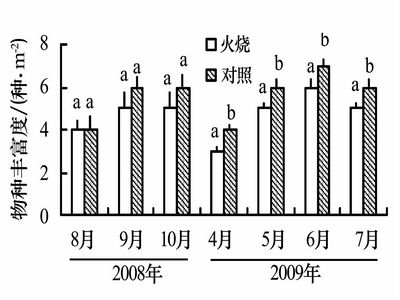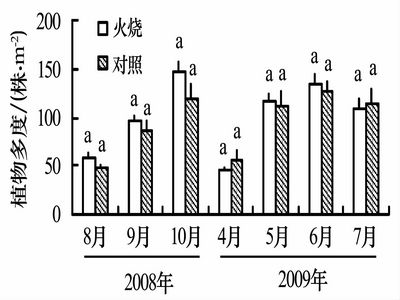Response of Desert Herb Synusia to Fire
Updatetime:2010-12-28From:
【Enlarge】【Reduce】
Fire is a significant influencing factor that affects ecosystem pattern and process. In an experiment of man-made grassland burning, the responses to fire of plant abundance, aboveground biomass, species richness, dominant species height were studied. The results are as follows. In the initial two post-fire years (2008—2009), the species richness of herbaceous synusia in burned site decreased, and the plant abundance was higher than that in the unburned sites, but the difference wasn't remarkable (P>0.05). In the first post-fire year (2008), the aboveground biomass in burned site was significantly higher than that in the unburned sites (P<0.05); In 2009 the difference wasn't remarkable (P>0.05). In other words, fire can only increase the productivity of desert ecosystem in the first post-fire year, has no effect in the second year. The height growth of three dominant species Allium polyrhizum, Cleistogennes songorica and Artemisia capillaris was restrained in the first post-fire year in burned site, and showed a slight more increase than that in check site in the second year. Whereas, another dominant species Cornulaca alaschanica appeared opposite response to fire, which was probably related to different growth characteristics of desert plants.
|
Response of plant species richness to fire (Picture/Journal of Desert Research) |
Response of plant abundance to fire (Picture/Journal of Desert Research) |
Appendix






